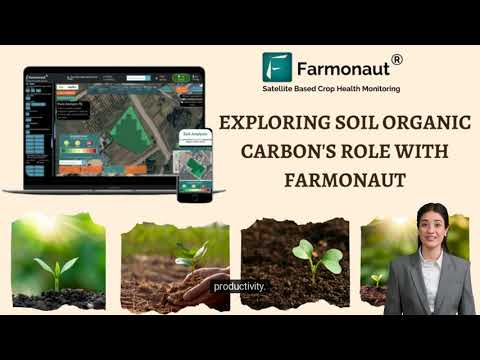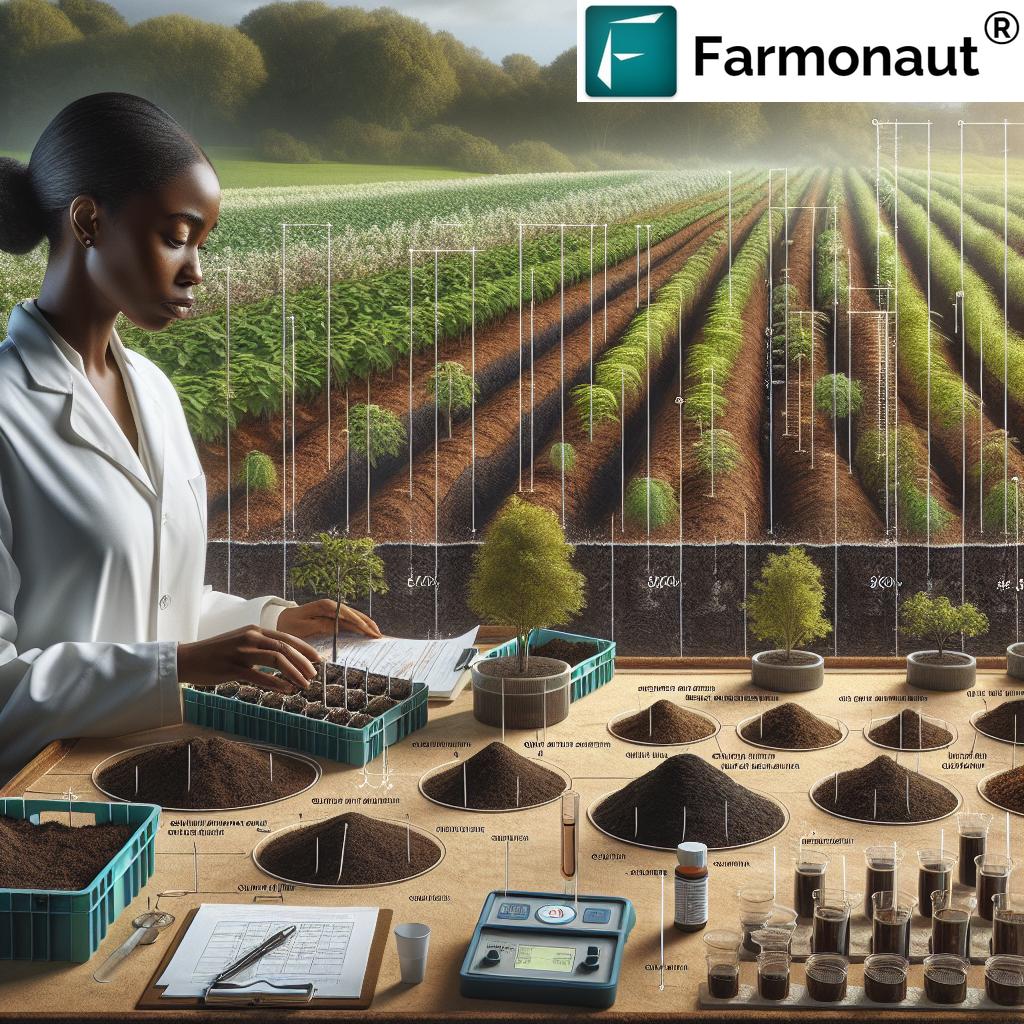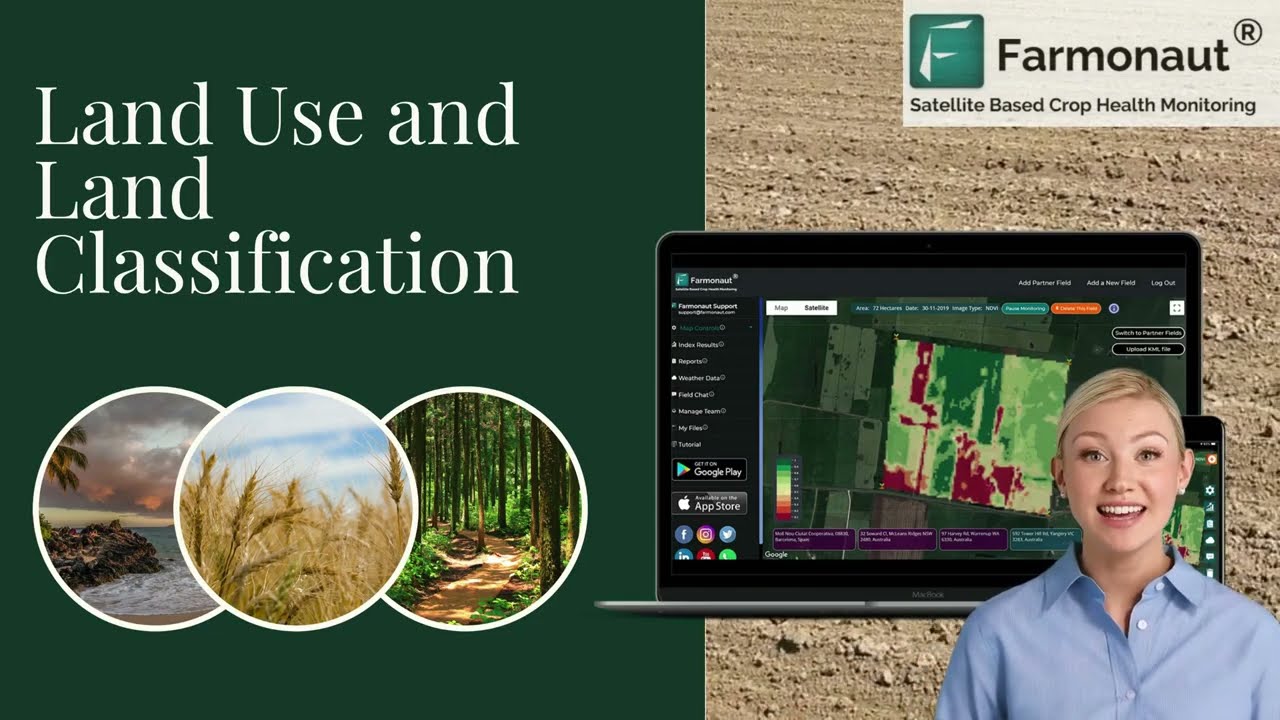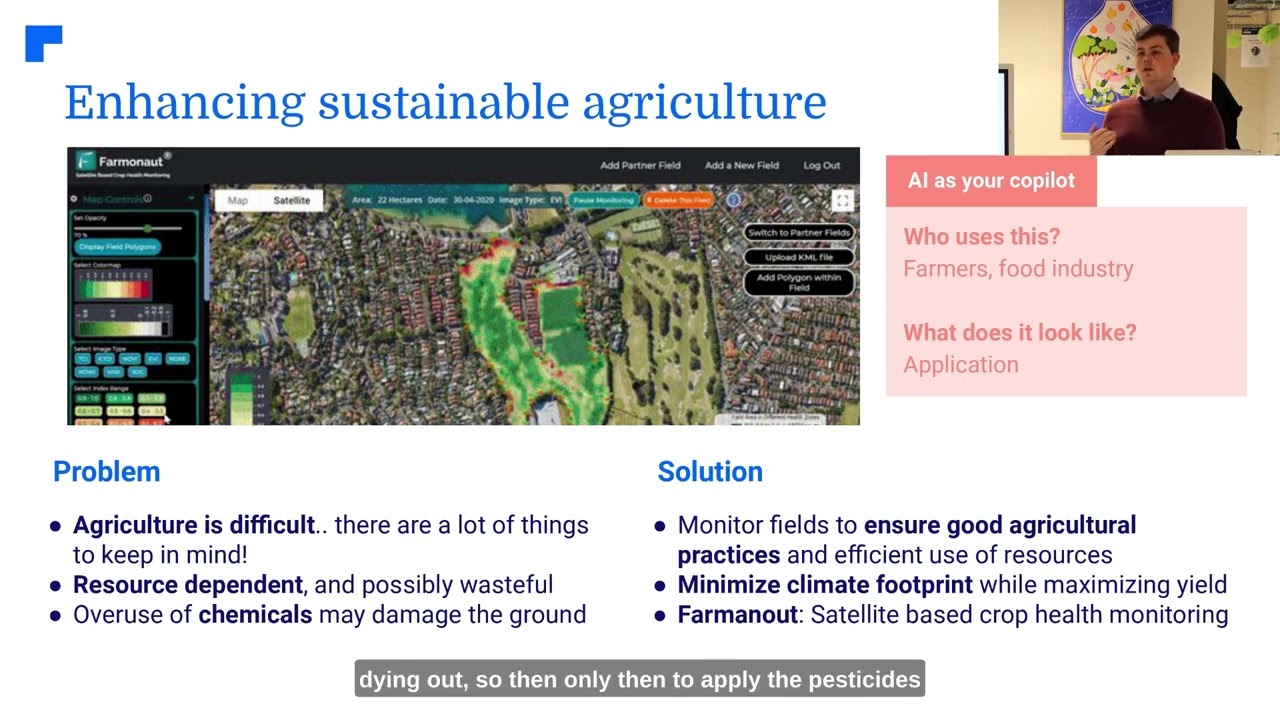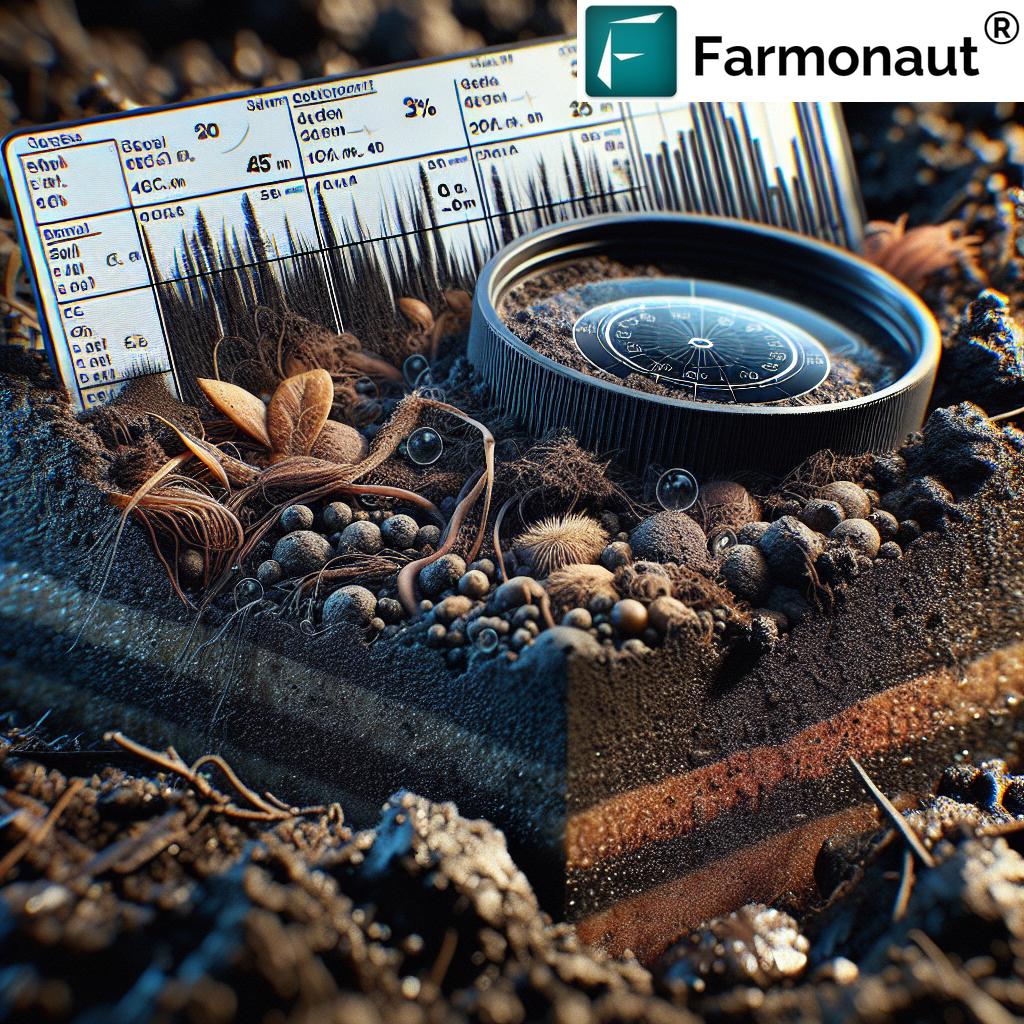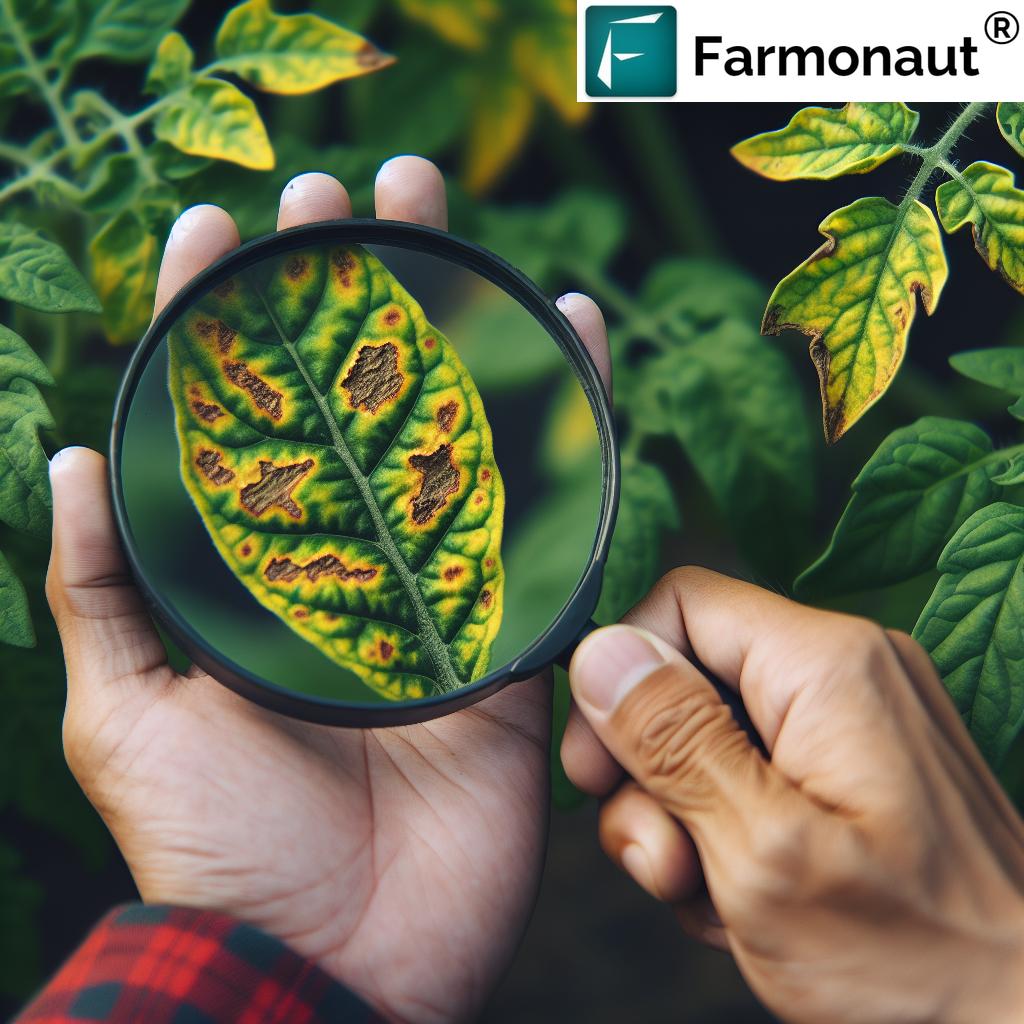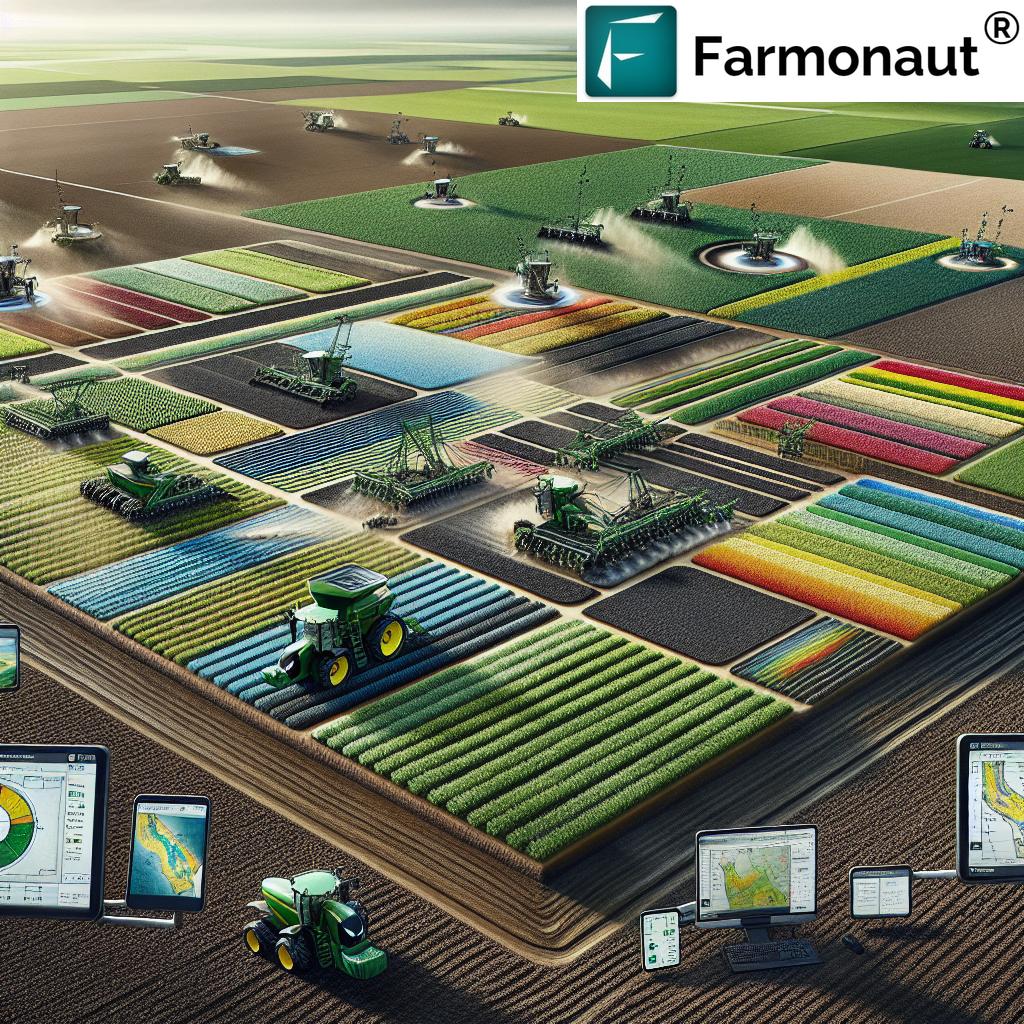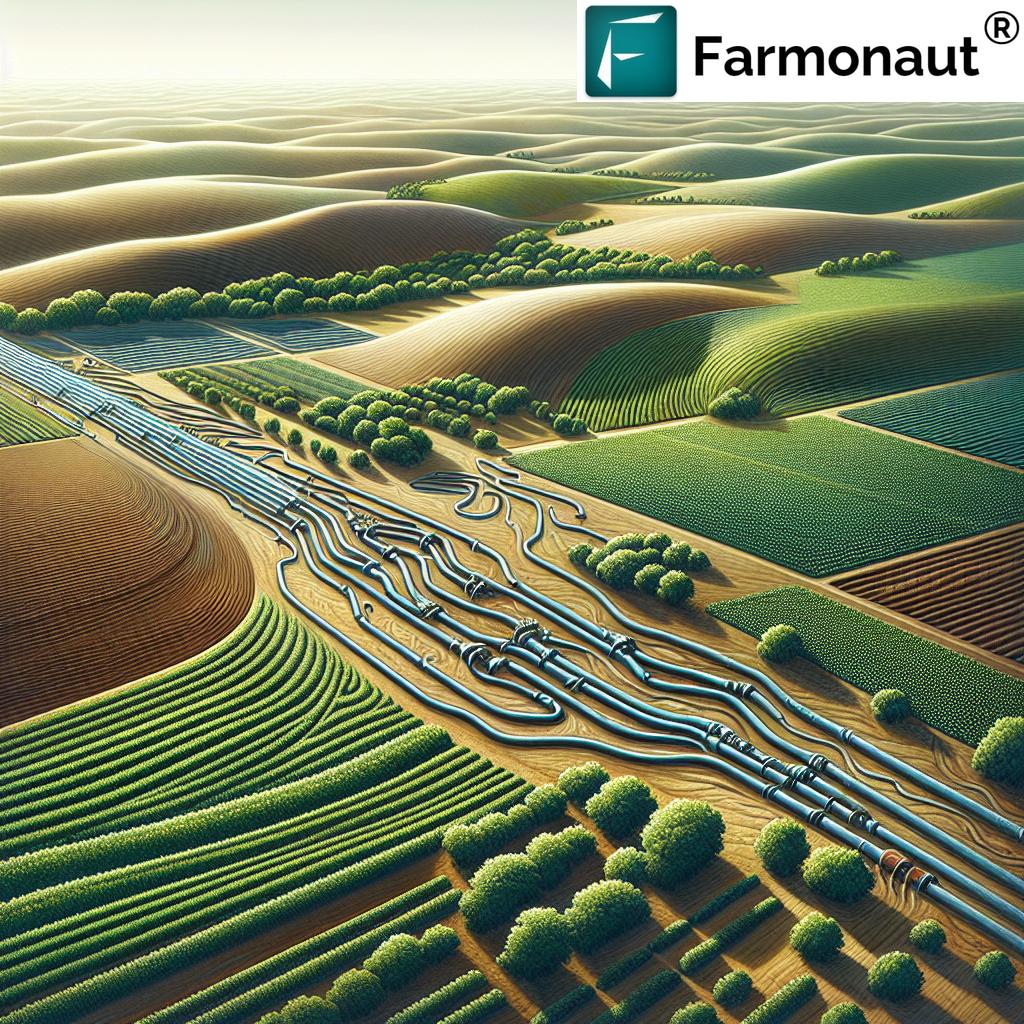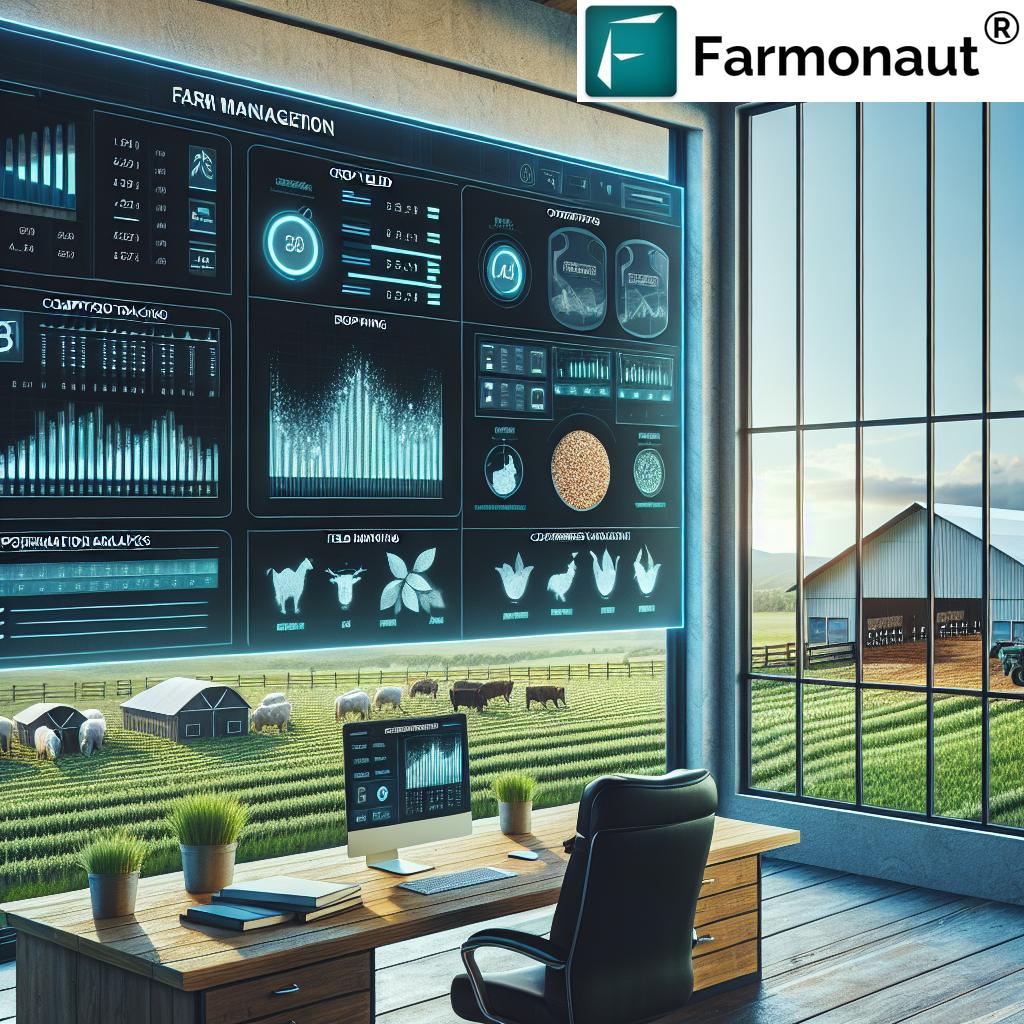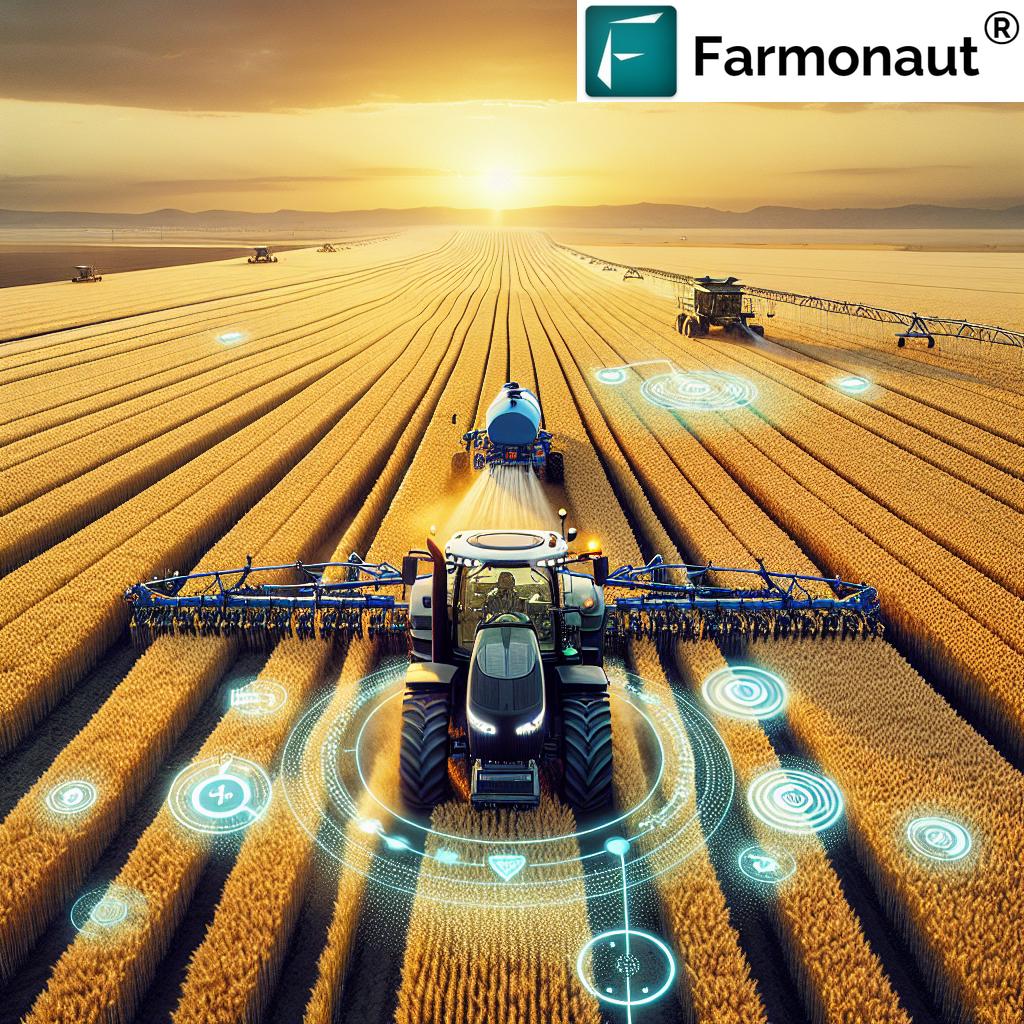Soil Analysis Breakthrough: 7 Ways to Boost Soil Health
Soil analysis is at the heart of sustainable agriculture, empowering us to make informed management decisions, optimize plant growth, and enhance soil health across farming and forestry. Leveraging advanced technology, innovative soil sampling methods, and AI-driven tools, we can precisely gauge soil properties, improve nutrient management, and promote environmental protection. This comprehensive guide delves into seven proven ways to boost soil health for optimal productivity, sustainability, and long-term land stewardship.
“AI-driven soil analysis can increase crop yields by up to 20% through precise nutrient and pH management.”
Table of Contents
- The Importance of Soil Analysis
- Key Soil Properties Analyzed
- Soil Sampling Methods
- Analytical Techniques for Soil Analysis
- Interpreting Soil Test Results
- Breakthroughs & Advancements in Soil Analysis
- Farmonaut’s Innovation in Precision Soil Analysis
- Soil Analysis in Forestry Management
- Comparative Table: Traditional vs AI-Driven Soil Analysis
- 7 Ways to Boost Soil Health
- FAQ: Soil Analysis, Management & Technology
- Conclusion
The Importance of Soil Analysis for Land Management
Soil analysis equips us with a deep understanding of the soil’s composition, nutrient content, pH levels, and biological activity, forming the foundation of precision agriculture soil analysis. By regularly assessing these critical soil properties, land managers can:
- Nutrient Management: Identify nutrient deficiencies, excesses, and apply precise fertilizer applications, reducing costs and minimizing environmental impact.
- Soil Health Assessment: Monitor organic matter and microbial activity to maintain structure, water retention, and fertility.
- Environmental Protection: Prevent nutrient leaching and runoff to protect water quality and support sustainable land management practices.
Such analysis is crucial in both agriculture and forestry, as it forms the basis for all growth-promoting, productivity-enhancing, and sustainability-focused practices.
Key Soil Properties Analyzed During Soil Analysis
Comprehensive soil analysis targets several crucial properties that directly influence plant growth, nutrient management, and soil health outcomes:
- Soil pH: The acidity or alkalinity of soil (source) is pivotal for nutrient availability and microbial activity. Most crops thrive in a pH range of 6.0–7.0.
- Nutrient Content: Assessing macronutrients (nitrogen, phosphorus, potassium) and micronutrients (iron, zinc, copper) guides fertilization strategies and optimizes soil fertility. (source)
- Soil Texture: Determines the proportions of sand, silt, and clay, impacting water retention, drainage, root penetration, and informs irrigation practices. (source)
- Organic Matter in Soil: Decomposed plant/animal residues form organic matter, enhancing structure, water-holding capacity, and nutrient cycling. (source)
-
Cation Exchange Capacity (CEC): A measure of soil’s ability to retain and exchange cations (positively-charged ions) reflecting nu
trient-holding capacity and fertility. (source) - Electrical Conductivity (EC): Indicates the total concentration of soluble salts. If EC is too high or low, it can impede plant growth and soil structure. (source)
Assessing these properties provides a holistic view of soil health, fertility, and capability to support productive, sustainable agriculture.
Soil Sampling Methods: Best Practices for Accurate Analysis
Accurate soil analysis starts with representative soil samples. The choice of sampling methods influences the reliability of all subsequent results and recommendations. Key techniques include:
- Composite Sampling: Collect several soil samples from randomly selected spots in the field and mix them to form a composite. This addresses variability and ensures a representative analysis.
- Depth Consideration: Take samples from multiple depths (e.g., 0-15 cm, 15-30 cm). This captures nutrient stratification across the root zone.
- Proper Timing: Sample when soil has consistent moisture, preferably before fertilizer applications, to avoid skewed results.
Regular, consistent sampling, aligned with the crop cycle, facilitates monitoring of soil health and optimized fertility management.
“Advanced soil testing identifies over 15 key nutrients, optimizing plant growth and supporting sustainable agriculture.”
Analytical Techniques for Soil Analysis: From Labs to Satellites
Modern soil analysis benefits from a spectrum of methods—each suited to different scales and needs:
- Laboratory Analysis: Soil samples are sent to accredited labs for precise measurement of nutrient content, pH, organic matter, CEC, and more. These tests provide high-accuracy data but can take time and incur higher costs.
- Field Testing: Portable test kits and sensors enable on-site measurement of pH, moisture, temperature, and basic nutrient levels, helping with rapid but less exact decisions.
- Remote Sensing: Technologies like drones and satellites (e.g., systems provided by Farmonaut) offer large-scale, high-resolution monitoring of soil and crop conditions across entire fields or regions. (source)
The integration of these soil analysis methods supports sustainable agriculture, improved management decisions, and timely interventions.
Interpreting Soil Test Results for Optimal Soil Nutrient Management
Once soil analysis results return, interpreting them in an agronomic context is essential for fertility optimization:
- Nutrient Levels: Compare with crop requirements to pinpoint deficiencies (e.g., N, P, K, or micronutrients like Zn, Cu, Fe) and avoid excesses that may harm plants or leach into water.
- pH Adjustments: If pH is out of optimal range, apply amendments: lime (raise pH), sulfur (lower pH).
- Organic Matter: Low levels suggest need for compost, manure, or cover crops to enhance soil structure and microbial activity.
- Electrical Conductivity (EC): High EC signals excessive salinity—remediate via leaching or selecting salt-tolerant crops.
Through ongoing monitoring and tailored soil nutrient management strategies, we optimize soil fertility season after season.
Breakthroughs in Soil Analysis: Digital, AI, & On-Site Innovations
The field of soil analysis has witnessed remarkable technological advancements that have revolutionized the efficiency, accuracy, and scalability of soil monitoring:
- Digital Soil Mapping: Utilizes geospatial data and algorithms to produce high-resolution soil maps, paving the way for precision agriculture soil analysis. This enables site-specific management of nutrient levels, pH, and soil properties.
- Lab-on-a-Chip Technology: Miniaturized devices allow real-time, on-site detection of nutrients and contaminants—speeding up test results while reducing laboratory dependency. (source)
- Artificial Intelligence (AI): AI-driven practices analyze large, diverse datasets to predict soil health trends, recommend management decisions, and automate alerts for corrective actions. (source)
- Satellite-Based Monitoring: Agricultural platforms like Farmonaut empower farmers and land managers with real-time insights from satellite imagery, enabling them to monitor soil moisture, check crop health, and optimize resource use efficiently.
These breakthroughs mark a paradigm shift in how we approach soil sampling methods, management, and sustainability.
Comparative Table: Traditional vs Advanced AI-Driven Soil Analysis
| Analysis Method | Key Technology Used | Estimated Accuracy (%) | Time to Results (hours) | Cost per Analysis (USD, est.) | Impact on Soil Health (scale 1-5) |
|---|---|---|---|---|---|
| Traditional Lab Testing | Wet Chemistry, Spectrometry | 90-95 | 24–72 | 30-100 | 4 |
| Field Test Kits | Chemical Reagents, Portable Sensors | 70-85 | 1–2 | 10-30 | 3 |
| Remote Sensing | Drone/Satellite Imagery, Multispectral Sensors | 80-90 | 0.5–2 | 5-20 | 4 |
| AI-Driven Soil Analysis | Machine Learning, Big Data, Satellite API | 95-98 | <1 | 1-15 | 5 |
AI-driven soil analysis stands out with the highest accuracy, rapid results, and the greatest positive impact on soil health assessment and management. For those looking to integrate next-gen solutions into farm or land management platforms, Farmonaut’s Satellite Data API and Developer Documentation offer plug & play access to AI-powered soil and crop analytics.
Farmonaut’s Innovation: Making Precision Soil Analysis Accessible for All
Farmonaut is a global leader in applying satellite-based and AI-driven technologies to empower growers, agribusinesses, and land managers—whether smallholder farmers or large enterprise operations. By providing easy, affordable access to advanced soil analysis and resource management tools, Farmonaut allows users to:
- Monitor crop and soil health in real time via multispectral satellite imagery, including precise tracking of soil moisture levels and organic carbon content.
- Receive AI-based advice on nutrient and pest management, irrigation scheduling, and application timing for fertilizers or amendments through Farmonaut’s Jeevn AI advisory system.
- Ensure total traceability of produce using blockchain for transparent, secure, end-to-end product journeys. Explore Traceability solutions here.
- Lower environmental impact and carbon footprint, with real-time tracking and actionable insights for sustainable agriculture. Discover Carbon Footprinting solutions here.
- Leverage resource and fleet management tools for operational efficiency in logistics and agricultural machinery. Learn more about Fleet Management here.
- Scale farm management operations seamlessly with modular features for large enterprises or plantations. Explore tools for Large-Scale Farm Management here.
Farmonaut’s advanced features are accessible across Android, iOS, and web apps, as well as through API and dedicated developer support, making precision soil analysis available globally.
Soil Analysis in Forestry: Stewarding Forest Health & Productivity
In forestry, soil analysis is indispensable for sustainable timber production, conservation, and forest regeneration:
- Species Selection: Identify and match tree species to soil conditions (texture, nutrient levels, pH)—crucial for successful afforestation or reforestation.
- Growth Monitoring: Monitor nutrient availability and soil moisture to ensure optimal tree growth over time.
- Conservation Efforts: Inform soil management practices to maintain forest health, prevent erosion, and support biological diversity.
Platforms like Farmonaut help forestry managers monitor large plantations using remote sensing and AI, ensuring real-time, scalable, and precise forest management. If you operate in the forestry sector—from crop plantations to forest advisory—precision monitoring tools are now within reach.
Soil Analysis Breakthrough: 7 Ways to Boost Soil Health
Let’s unlock actionable strategies that leverage soil analysis, advanced technology, and sustainable management practices to improve soil health and crop productivity:
-
Regular Soil Health Assessment:
Conduct routine soil tests to monitor key properties—nutrient content, pH, organic matter, CEC, and EC. Use precise laboratory or AI-assisted remote sensing methods for efficiency. Regular assessments highlight subtle changes, enabling early intervention and management. -
Optimize Soil Nutrient Management:
Integrate test results with AI-based recommendations to fine-tune fertilizer application, address deficiencies, and avoid excesses, reducing input costs and environmental impact. Farmonaut’s Jeevn AI provides actionable, data-driven advice aligned with the field’s specific needs. -
Manage Soil pH Effectively:
Regularly test pH and apply amendments (lime or sulfur) to maintain optimal range for plant health and maximum nutrient uptake. As pH affects almost every biological and chemical process in the soil, this step is foundational. -
Increase Organic Matter in Soil:
Add compost, green manure, or crop residues to enhance structure, moisture retention, and support beneficial microbial activity. Use cover crops and minimize soil disturbance to encourage carbon sequestration and build resilient soil. -
Monitor and Balance Electrical Conductivity (EC):
Check EC levels to avoid problems of salinity or poor nutrient distribution. Manage water quality, select salt-tolerant plant varieties if needed, and use precision irrigation to ensure electrical conductivity remains in an optimal range. -
Adopt Precision Agriculture Soil Analysis:
Employ digital soil mapping, satellite-based monitoring, and AI-driven analytics for real-time, zone-specific soil management. Platforms like Farmonaut provide large-scale, scalable solutions integrated with seamless app or API access. -
Implement Sustainable Land Management Practices:
Rotate crops, use conservation tillage, maintain vegetation cover, and monitor carbon footprint to protect soil quality and minimize environmental impact. Farmonaut’s carbon footprinting platform (learn more here) enables monitoring and reduction of emissions for compliance and long-term sustainability.
By integrating these seven pillars with modern analysis technology and management wisdom, we set the stage for healthier soils, improved plant growth, and more resilient agro-ecosystems.
Frequently Asked Questions: Soil Analysis & Modern Management
What is soil analysis and why is it important?
Soil analysis is the practice of examining soil properties—such as nutrient content, pH, organic matter, and microbial activity—to inform more precise management decisions. It identifies nutrient deficiencies, guides fertilization strategies, and supports sustainable land and plant health.
How frequently should we conduct soil analysis?
For most crops, annual or biennial analysis is recommended. However, higher frequency (e.g., every season) may be appropriate for high-value crops, intensively farmed lands, or soils with known issues.
Which method is best for soil sampling?
Composite sampling provides a representative average of soil conditions in a field. In areas with high variability, grid or zone sampling—possibly guided by satellite data—may yield more actionable insights.
Can technology improve the efficiency and accuracy of soil analysis?
Absolutely. AI-driven soil analysis, remote sensing, and platform-based solutions (like Farmonaut) enable faster, more accurate, and cost-effective soil monitoring compared to traditional approaches.
How does soil pH affect plant growth?
Soil pH determines nutrient availability and microbial activity. Most plants thrive in slightly acidic to neutral soils (pH 6.0–7.0). Levels outside this range can hinder nutrient uptake.
What role does organic matter play in soil health?
Organic matter is crucial for soil structure, water retention, and nutrient cycling. It feeds beneficial microbes, promotes carbon sequestration, and increases resilience to drought and erosion.
How can I get advanced soil analysis for my farm or forest lands?
Leverage Farmonaut’s web or mobile app, or connect directly via API for scalable, high-precision soil and crop health monitoring.
Conclusion: Harnessing Soil Analysis for a Resilient, Sustainable Future
In the face of global food demand, climate variability, and the push for sustainable agriculture, soil analysis represents our most powerful tool for optimizing plant growth, protecting the environment, and ensuring the long-term health of our land. By embracing regular soil sampling methods, leveraging AI and remote sensing, and managing with actionable data, we can:
- Enhance soil fertility and productivity for every crop cycle
- Reduce input costs and environmental harm through targeted interventions
- Secure future harvests by building resilient, carbon-rich soils
- Promote sustainability in agriculture, forestry, and beyond
With trailblazers like Farmonaut making advanced analyti cs and real-time monitoring accessible, growers and land managers can confidently step into a new era of data-driven, technology-enabled land stewardship—reaping the benefits of today’s soil analysis breakthroughs.
Ready to transform your soil health? Explore the Farmonaut app and technology ecosystem or reach new efficiency levels with their API and management platforms—advancing precision agriculture for farms, plantations, and forests worldwide.
Access the Farmonaut app on Web, Android, or iOS.
For advanced integration and large scale applications (farm management, forestry, carbon tracking, traceability, plantation advisory), learn more about Farmonaut’s crop, plantation, and forest advisory platform.
Let’s build the future of agriculture—one soil test, one decision, and one sustainable practice at a time.





